“The walls were covered with a pink-flowered Lucca damask, patterned with birds and dotted with dainty blossoms of silver…” (Oscar Wilde, “The Birthday of the Infanta,” The House of Pomegranates)
After throttling myself through the Miami Beach Convention Center, I entered NADA at the inappropriate speed of 1,000 mph, stinking of sulfur. My pace quickly rectified. NADA called for something softer. I tied my silver shoes for a stroll in the meadow.
First, I encountered a kitchen table: 10′ x 16′ Wallpaper, Leaf Shadows and Still Life with Thyme and Echinacea by Daniel Gordon at the James Fuentes booth. A patterned wall hosts paintings, creating the effect of a world onto its own, reflecting the scenes in the paintings themselves. The still lifes abide by their own rules, where beauty is of the highest order. The not-quite-right shadows and play between real, hyper-real, and abstraction lovingly skew the logic we may have taken for granted before this year. As the collective belief in facts distorts like a fun house mirror, maybe nothing is spared, not even a bowl of fruit on the kitchen table.
I lingered with the fruit for a while, and later, I lingered with a hot dog: Colossus, Shin Over Shoe, Hand Lifts Bottom Bun by Ivy Haldeman. If the kitchen table suggests twisted domesticity, this painting, at Downs & Ross, touts something seemingly wholesome for the sake of perversity – classic Americana. A personified and eroticized hot dog with smooth shaved legs and a fancy bun fur coat. Other colossuses include Constantine and an 100ft Nero. Ivy Haldeman depicts not the emperor, but what the empire runs on – the industry of desire, post-steel. The painting is a Rorschach test – eat or fuck or both, but…how? The high femme phallic snack leaves options open, even alleviating guilt in its form (a savvy mechanism). You cannot objectify a cartoon, can you?
Beauty Masks fetishize less directly, or not at all. Aneta Grzeszykowska, at Lyles & King, presents a series of photographs of a figure wearing stylized masks. Some of the masks cover her mouth or her eyes; others leave openings or breathing holes. Although Beauty Masks could point to objectification, or consensual objectification (S&M), the portraits aren’t filled with the potential violence that desire often intermingles with. Most of the masks appear materially soft, in pinks and flesh tones. The only hard mask is worn loosely and appears to be hooked up to an apparatus out of frame. The portraits appear utilitarian, for the catalogue of future-functions we’ve yet to name.
My Grandmother’s Robe/Pink Pelle Pelle by Zadie Xa at L’Inconnue considers the future by displaying recent pasts. The wall piece is spread like the memorialized jacket of a rock star. Synthetic hair takes the place of leather fringe; the new look: gradations, tropical colors and psychedelic eyeballs. The number 83 is stitched into the piece – the year the artist was born. Zadie’s influences, her grandmother and Pelle Pelle (the infamous hip-hop clothing brand), have had equal measure. The style recalls Jim Drain’s eye-catching textile sculpture at The Pit, which is emblematic of the aesthetic created at Fort Thunder.
The message in the bottle: Lazaros, at Capital Gallery, loads found objects and liquid into bulbous glass bottles and displays them on the floor. In the Spell for cosmic love? Light bulbs, a Palm Springs ACE Hotel parking pass, and a jump rope. In the Hex to ward off reptilian brainwashing? A fly swatter and a lizard hand puppet. The ways of dealing with wishes and woes is two-fold. As far as magical practice is concerned, a spell must be paired with real-world action. This is the difference between a spell and a message in a bottle: Levels of romanticism and levels of follow-through. Nombreflad Quint en Rouge by Orion Martin at Bodega incorporates driftwood, drumsticks and automotive paint into a curved, cherry-red frame. Active and passive wood. Gleaming, it holds a painting of a flattened and glowing red four-petal flower, behind a floating flourished fence. The painting resembles the winding designs in the corners of illuminated manuscripts and medieval crests. Abstractly hyper-romantic. Heart leap. I turned from it and saw a small white rose.
An abundance of flowery work could point to a more conservative time, left and right alike, (re: the call for the removal of Dana Schutz’s painting at the Whitney Biennial, and the Guggenheim’s removal of Dogs That Cannot Touch Each Other, Theater of the World, and A Case Study of Transference in the “Art and China after 1989: Theater of the World” show). The violence of flowers – that which is shown is that which is palatable and that which is missing is that which has been censored and killed. In the Disagreeable Rose by Naoki Sutter Shudo, the blade is exposed behind the petals, and the rose is partly made from a used cigarette filter. Although the blade acts as a literal thorn, consider the societal thorn in the Oscar Wilde story, The Birthday of the Infanta. To summarize: the Infanta (a Spanish princess) has a birthday party. The Dwarf (who has been kidnapped) dances for her and falls in love. As the Dwarf has lived in the forest, he does not understand that he is ugly. To him, he pleases the Infanta with his dancing. To her, he is revolting. She laughs at him and, “took out of her hair the beautiful white rose, and partly for a jest…threw it to him across the arena with her sweetest smile, he took the whole manner quite seriously and pressing the flower to his rough course lips he put his hand upon his heart…”
Later, “When the truth came upon him, he gave a wild cry of despair and fell sobbing to the ground”. As he discovers the “truth”, we do too. When the Infanta realizes he has died, she declares, “For the future, let those who come play with me have no hearts.”
The truth has more to do with the location of the Dwarf’s death than his heart, making the Infanta’s final statement both a (somewhat expected) illustration of a sadistic upper class, (think Pasolini’s Salo), and the pout of a twelve year old sore loser, who has just made a political error. As the Infanta took siesta, the Dwarf wandered into the palace to find her; he instead found a mirror. Her gaze was revealed. He wasn’t seeing himself for the first time. What killed him is that he became her, “…everything seemed to have its double in the invisible wall of clear water.”
Even the flowers are vicious and hateful. This is an origin story of sight. We must place distance with the palace mirror to contend with its double. Art objects concerned with beauty and with the origin story of the artist: the stage after the mirrors’ revealed. Even if its scale is small and sometimes painful. The location, the palace and Miami Basel, is the dangerous double – that which we aspire to.
Be careful what you wish for.
Crying Eyes, handmade multiples by Pam Lins at Rachel Uffner Gallery, pock the wall. The process of making 85 crying eyes from clay is a meditation on the condition that makes tears as big as eyeballs. Facing the Crying Eyes is another meditation – at Participant Inc. Baseera Khan’s installation psychedelic prayer rugs provides a moment of silence within the art fair. This was the intention of the artist and curator, Lia Gangitano. The rugs tilt to face Mecca, are graphic, brightly colored and soft.
On the other side of the wall, is a hung, thick black-quilted blanket with a hole surrounded by a golden embellishment. Acoustic Blanket Sound Suit. Baseera Khan’s Sound Suit functions differently than those made famous by Nick Cave, “Soundsuits camouflage the body, masking and creating a second skin that conceals race, gender, and class, forcing the viewer to look without judgment.” (Jack Shainman Gallery) Khan does not mask identity. The soft sculptures allow the viewer to focus on the political implications of the work without the relief of catharsis. The call to prayer, the moment of silence, for us and not about god.
The artists at NADA won’t play god either, “…to imitate God by creating something valid solely on its own terms…content is to be dissolved so completely into form that the work cannot be reduced in whole or in part to anything not itself,” (“Avant Garde and Kitsch,” Clement Greenberg). Big, crashing bells for art for itself ring absurd. To play god feels like nuclear war, the travel ban, the fate of Jerusalem, the removal of artworks, and the mirror of the Infanta. NADA favors hot dogs, flowers with blades as thorns, and the lessons of fables. An impish moment at Alden Projects: L.A. Artists In Their Cars by Joe Goode. The light and space artists’ monumental sculptures? No. NADA presents their calendar photos.

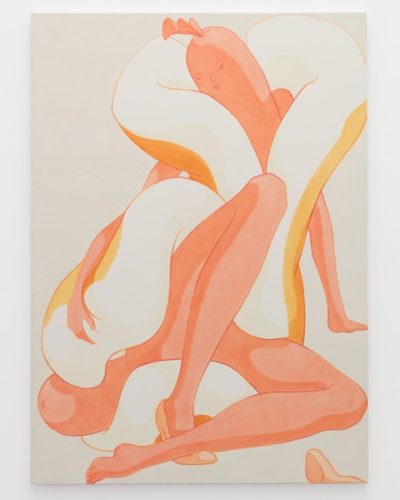
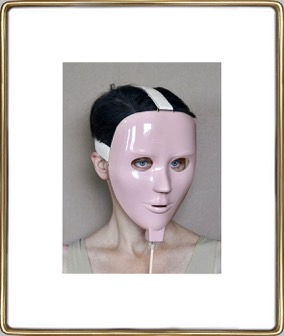
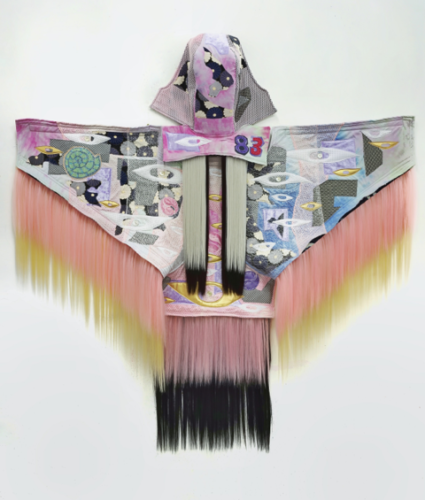

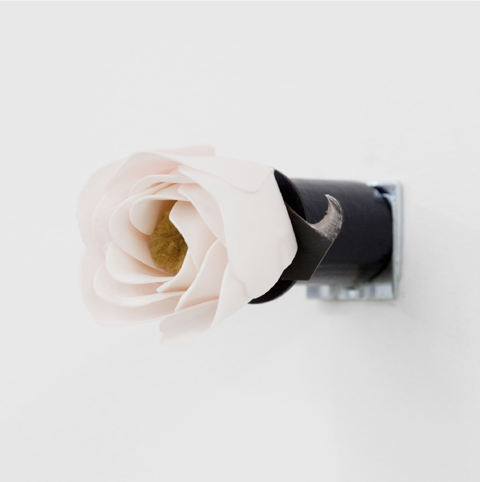

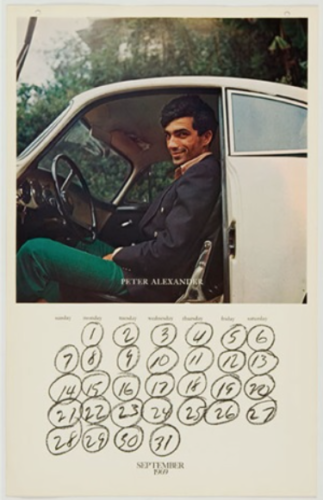
Excellent writing Jillian. I am impressed. love the bit about “stinking of sulphur” and the “silver shoes”. We are overdue for a coffee and irreverent laugh.
xxxx, Ann McCoy